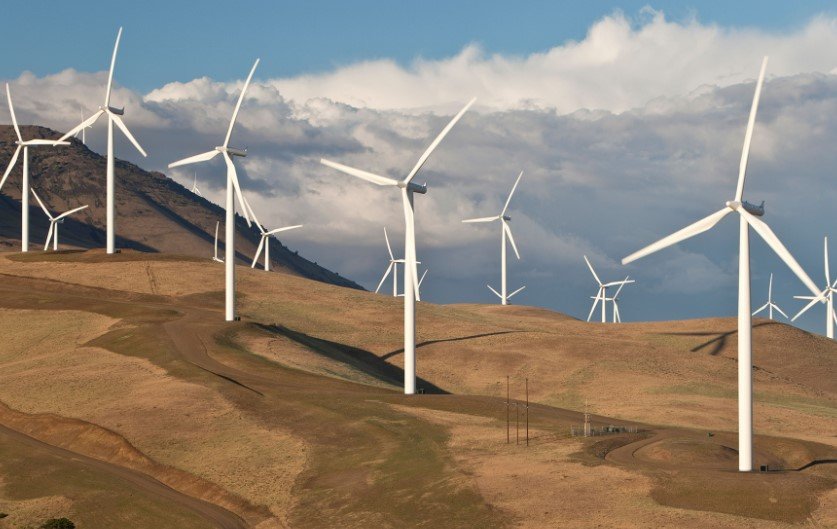Egypt has fully started the Red Sea Wind Energy wind farm, a 650 megawatt project that stands as the largest in the Middle East and Africa. This key step, led by French company Engie and its partners, happened in June 2025 near Ras Ghareb on the Red Sea coast, helping Egypt reach its goal of more clean power and lower carbon output.
Project Details and Size
The wind farm sits in the windy Gulf of Suez area, known for strong breezes that make it perfect for wind power. It uses 84 large turbines to make enough electricity for over one million homes each year.
This setup will cut Egypt’s carbon emissions by about 1.3 million tons yearly, supporting the nation’s plan to get 42 percent of its electricity from renewable sources by 2030. The project grew from an initial 500 megawatts to 650 megawatts through a quick 150 megawatt addition.
Teams finished the work four months early, with power starting to flow in phases: 306 megawatts in December 2024, 194 megawatts in April 2025, and the last 150 megawatts in June 2025. Over seven million work hours went into building it without any major injuries, showing strong safety steps.
Who Built It and How It Was Funded
Engie leads the group with a 35 percent share, working with Orascom Construction from Egypt at 25 percent, Toyota Tsusho from Japan at 20 percent, and Eurus Energy Holdings also at 20 percent. They run it under a 25-year deal where they build, own, and operate the farm.
Money came from global banks like the Japan Bank for International Cooperation, Sumitomo Mitsui Banking Corporation, Norinchukin Bank, Société Générale, and the European Bank for Reconstruction and Development. Insurance support from Nippon Export and Investment Insurance helped too.

A long-term agreement with the Egyptian Electricity Transmission Company ensures steady income. This setup draws private money into Egypt’s energy shift, especially in the Gulf of Suez, which has great wind potential.
| Key Partners | Ownership Share | Role |
|---|---|---|
| Engie | 35% | Lead developer and operator |
| Orascom Construction | 25% | Local construction expertise |
| Toyota Tsusho Corporation | 20% | Technical and financial support |
| Eurus Energy Holdings | 20% | Renewable energy experience |
Why This Matters for Egypt’s Energy Future
Egypt faces growing power needs, with demand rising over five percent each year due to more people and industry. The country has relied heavily on natural gas, but now aims to mix in more renewables to save costs and meet global climate goals.
This wind farm adds to Egypt’s total wind power, pushing Engie’s capacity in the country to nearly one gigawatt. It fits with other big projects, like a planned 10 gigawatt wind farm with partners from the UAE, set to offset nine percent of Egypt’s carbon emissions.
By focusing on wind, Egypt can export less gas and use it at home, stabilizing prices and supply. Recent events, such as high energy costs worldwide, make this shift timely and smart.
Leaders say it shows how teamwork can deliver big clean energy wins fast. With volatile fuel prices, projects like this offer reliable, low-cost power for the long term.
Impact on the Region and Global Trends
The Middle East and Africa are ramping up renewables to fight climate change and create jobs. This farm sets an example, showing how wind can power growth without harming the environment.
In nearby areas, similar efforts include Saudi Arabia’s big solar and wind plans, and Mauritania’s new wind farm cutting fossil fuel use. Globally, companies like Engie are building more renewables, with over 52 gigawatts installed worldwide by mid-2025.
For Africa, where many lack steady power, projects like this bring hope. They create jobs in building and upkeep, boost local skills, and help meet rising energy needs sustainably.
- Powers over one million homes with clean energy.
- Reduces yearly carbon emissions by 1.3 million tons.
- Saves Egypt about five billion dollars in gas costs over time.
- Supports goals from global talks like COP28 for more renewables.
Challenges and Next Steps
Building in a desert spot brought hurdles like harsh weather and supply chain issues, but teams overcame them with careful planning. Future expansions could add even more capacity, as the area has room for growth.
Egypt plans more wind and solar farms to hit its 2030 targets. With international help, the country can speed up these efforts, drawing in billions in investments.
Experts predict wind power will grow fast in the region, thanks to falling costs and better tech. This project proves large-scale renewables work well here, paving the way for others.
As Egypt celebrates this win, it encourages more nations to invest in wind. Share your thoughts on how clean energy can change the Middle East and Africa. What other projects excite you? Let us know in the comments and spread the word to keep the conversation going.
